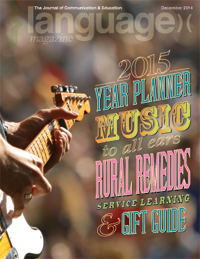A selection of schools representing the diversity of Italy
Northern Italy
Italy-Amo School
On the Italian Riviera, Italy-Amo School teaches in a special way, constantly interacting with students, always by their side along the path to learning and mastering the great Italian language. They know all their students by name and look forward to welcoming them back when they leave.
Located in the very heart of the charming seaside resort Sanremo’s beautiful and stylish pedestrian area, it is the right place for studying in a neighborhood famous for its 100% “Italian-style” aperitif bars and typical restaurants. Students can enjoy the beach, walks, and outdoor activities all year round, or explore the impressive hinterland of hamlets, woods, and mountains.
Courses are designed to guarantee the highest language-learning standards, with small classes and strictly native, skilled, and motivated teachers
IH Milan
Milan is deservedly famous as the city of fashion, design, elegance, shopping, and business. But there are many other reasons to choose Milan: history, art, culture, music, higher education, night life, food. Milan is truly a city that lives up to expectations. Next year, more tourists from all over the world will have the opportunity to enjoy all this as the city will be hosting Expo 2015.
International House Milan is located in the heart of the city and offers Italian courses for all levels and needs with a team of 15 qualified, experienced, and friendly teachers, coordinated by a full-time director of studies.
The students, who come from all over the world, are the real stars of the lesson, in line with the principle that the best way to learn a language is to use it, with the encouragement of a teacher, making speaking the language in everyday situations easier.
IH Milan not only offers help obtaining a visa and finding accommodation and a rich social program, but a great experience of the Italian language, culture, and dolce vita, Milanese style.
Tuscany
OrbitLingua
OrbitLingua is an expanding, dynamic, and independent language school located in Orbetello, a characterful seaside town on the southern coast of Tuscany, in the Maremma region, less than two hours from Rome, Florence, Siena, and Pisa.
It offers Italian group courses from May to October and individual or small closed groups all year round, with special programs of Italian language plus social activities for adults in May–June and September–October; and for juniors in July and August.
OrbitLingua provides a great atmosphere for learning Italian with no more than ten students per class, leading to faster progress.
Compared with big cities, Orbetello offers a higher standard of living, and students find a friendly atmosphere from the moment they arrive. A carefully studied social program including various seminars, excursions, and special evenings enables students to discover the many aspects of Italian culture.
Orbetello’s location makes it very easy to reach by plane, train, or car, and OrbitLingua also offers dual-center study packages: Orbetello/Florence, Orbetello/Siena, Orbetello/Rome, and Orbetello/Perugia.
Rome
Dilit IH
Teaching Italian in the center of Rome since 1974, Dilit International House is in a villa with a small garden, two spacious terraces, and a snack bar for students to savor Italian food and to socialize. Every year, about 1,700 international students from more than 80 countries attend the school’s general Italian programs or choose one of the special courses, such as Discovering Rome, Business Italian, 50+ Program, Italian home Cooking, or Italian through Film Making. The result is a very international and friendly atmosphere.
Students are welcomed into host families or can choose rooms in shared apartments. On request independent flats/hotels can be arranged.
Dilit is a full member of EAQUALS, IALC, and ASILS and is authorized by the Italian Ministry of Education. Along with being the examination center for CILS and CELI, it is proud to celebrate “40 years of experience: 65.000 international students — 125 nationalities — and 5.000 teachers trained.”
Southern Italy
Studio Italiano
Founded in 2001, the Studio Italiano is located in the historic center of Tropea, a famous beach resort in Calabria, which seems like an island in the way it barely connects to the mainland by a narrow strip of reef in the gulf of St. Euphemia. The main objective of the school is to offer an enjoyable cultural experience in this part of the bel paese, in a warm and friendly environment with highly qualified teachers. Studio Italiano is also a PLIDA Certification Center, member of the international network of the Società Dante Alighieri.
It offers Italian language and culture courses, group and individual, for all levels — beginner, intermediate, and advanced — as well as extraordinary flexibility in arranging the schedule of private lessons (one-to-one or two-to-one), with opportunities for students to choose the total number of sessions (at-home tutorial also available on request).
Conversation courses are based on the communicative-situational method. Specialist courses are available on demand (e.g., managerial communication techniques, Italian literature, history, art, painting, law). Scheduled PLIDA exams and specific courses are also available to students to obtain the certificate of linguistic competence in Italian as a foreign language, officially recognized by the Italian Ministry of Foreign Affairs, which is essential to apply for long-term residence permits.
In addition, the center offers lessons in Mediterranean cuisine, and the tasting of typical products and local wines, cultural excursions, guided tours and sporting activities (e.g., catamaran sailing, diving, paragliding, climbing, trekking).
Sant’Anna Institute
The south of Italy, rich in tradition and culture, is home to the well-renowned Sant’Anna Institute. Located in Sorrento, Italy, on the regal Amalfi Coast, Sant’Anna has been recognized for its excellence in the field of study abroad programs (SUNY-accredited) as well as Italian language courses for high school students and adults for the past 16 years.
In its historical four-story building sitting on the edge of a promontory overlooking the Gulf of Naples, the classroom experience at Sant’Anna is unlike any other. Students can literally sit in on a course like Archeology: Cities of Fire and at the same time look out the window and see Mount Vesuvius itself. In just an hour’s train or bus ride, field trips take students to discover some of Southern Italy’s most precious treasures, including the historical city of Naples, the ruins of Pompeii, and the famous coastal cities of Amalfi, Positano, and Ravello.
Sorrento itself is a magnificent location for international students. This charming town, dating back to the ancient Greek and Roman eras, is a beautiful palimpsest of traditional and modern Italy. Through local internships available for credit, service-learning projects, faculty-led programs, and traditional study abroad programs, Sant’Anna students have year-round opportunities to make their own unique contribution to this enchanting corner of the world.
Multiple Destinations
Brightspark
From classical ruins to charming pizzerias, Renaissance masterpieces to fashion-forward boulevards, Brightspark’s fully customizable Italian tours introduce lessons that can’t be taught in a classroom. Whether students want to spend their time exploring world-famous Roman sights or would prefer to check out the country’s idyllic villages, Brightspark bring them their your perfect adventure. Brightspark’s dedicated team of tour consultants and tour specialists will work closely with teachers to create an educational or performance itinerary that fits their group’s unique needs and interests.
History, art, language, culture, and technology have been thriving in the seat of Western civilization for thousands of years, and no matter what subject sparks students’ interests, they’ll walk away inspired.
 The Chinese Administration of Radio, Press, and Publications is not amused by rampant puns in advertising, television and the news. The Administration showed no sense of humor when it banned the use of puns and “non-standard language,” citing commercials for using wordplay and accusing the media of misleading the public and violating the National Common Language law.
The Chinese Administration of Radio, Press, and Publications is not amused by rampant puns in advertising, television and the news. The Administration showed no sense of humor when it banned the use of puns and “non-standard language,” citing commercials for using wordplay and accusing the media of misleading the public and violating the National Common Language law.










